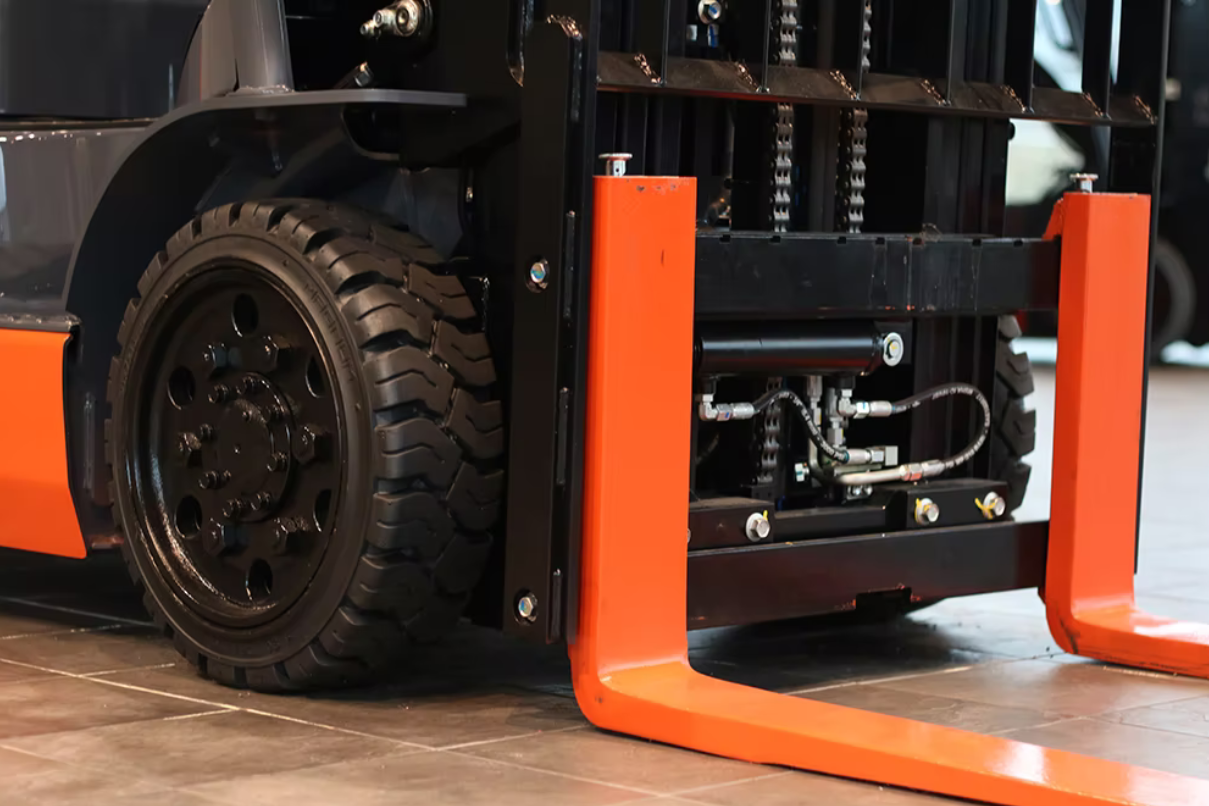
What is a fork carriage?

130 Slide forklift instructor's Powerpoint presentation for £50
Basic terms and classes of fork carriages
This article is by Toyota Forklifts but a much more detailed description of fork carriages and their classes is available here.
Did you know the forklift’s forks don’t directly connect to the mast? They actually attach to a support platform called the forklift carriage. The carriage is important because it is used to mount objects, including forks, the load backrest, and attachments, to the mast chains, allowing loads to go up and down the mast channel.
Selecting a forklift with a dependable carriage is vital to the safety of all those who work in material handling environments and for the long-term efficiency of your operation. Any place where parts of industrial machinery are attached sets and not one piece should be top-of-mind for the product’s durability. The first step in assessing the forklifts that are currently or may eventually be a part of your fleet is having a clear understanding of what each part implies for your operation. This guide will help you understand both carriage height and what that height implies for your potential lifting capacity.
Identifying Forklift Carriage Class
Understanding your forklift’s carriage class is important because it helps you understand what forks and objects will work with your forklift. There are five carriage classes. Each class can be determined by the distance between the top edge of the upper fork bar and the bottom edge of the lower fork bar. The carriage class also gives you a good idea for the lifting capacity of your forklift. Here is the carriage class guideline breakdown:
Class 1
Carriage height: 13”
Lifting Capacity: Less than 2,200 lbs.
Class 2
Carriage height: 16”
Lifting Capacity: Between 2,200 lbs. and 5,500 lbs.
Class 3
Carriage height: 20”
Lifting Capacity: Between 5,500 lbs. and 10,998 lbs.
Class 4
Carriage height: 25”
Lifting Capacity: Between 11,000 lbs. and 17,600 lbs.
Class 5
Carriage height: 28.66”
Lifting Capacity: Between 17,602 lbs. and 24,198 lbs.
Using this guide, you can ask informed question of your forklift provider in order to make sure you get the best carriage for your operational needs. Understanding carriage class can also help you get a clear understanding of your fork and attachment capabilities Keep in mind that the carriage’s capacity is only one part of the equation when it comes to your forklift’s lifting capabilities. Always rely on your forklift’s data plate for accurate capacity information based on the entire configuration.
Internal Website Links
- Home Page
- Forklift Training Articles
- Forklift Buyer's Guide
- Forklift Accidents
- Forklift Written Test
- Forklift Training Section
- Health and Safety News
- Free Forklift Training Courses
- Forklift legislation
- Forklift Training Accreditation
- Forklift Technical Section
- Forklift Practical Test
- Forklift Buyer's Guide
- Forklift News
- Forklift Training History (UK)
- Forklift Related Downloads
- Forklift Safety Products
- Forklift Operator Jobs
Translate this website
Search this website
Ads by Google